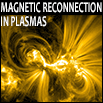Speaker
Prof.
Axel Brandenburg
(Nordita)
Description
Using direct numerical simulations of three-dimensional hydromagnetic
turbulence,
either with helical or non-helical forcing, we show that the ratio of
kinetic-to-magnetic energy dissipation always increases with the
magnetic Prandtl
number, i.e., the ratio of kinematic viscosity to magnetic diffusivity.
This
dependence can be approximated by a power law, but the exponent is
not the same in
all cases. For non-helical turbulence, the exponent is around 1/3, while
for helical
turbulence it is between 0.6 and 2/3. In the statistically steady state,
the rate of
the energy conversion from kinetic into magnetic by the dynamo must
be equal to the
Joule dissipation rate. We emphasize that for both small-scale and
large-scale
dynamos, the efficiency of energy conversion depends sensitively on
the magnetic
Prandtl number, and thus on the microphysical dissipation process. To
understand
this behavior, we also study shell models of turbulence and one-
dimensional passive
and active scalar models. We conclude that the magnetic Prandtl
number dependence is
qualitatively best reproduced in the one-dimensional model as a result
of dissipation
via localized Alfven kinks.
For many astrophysical systems, the microscopic energy dissipation
mechanism is not
of Spitzer type, as assumed here. It is not obvious how this would
affect our
results. Unfortunately, the question of energy dissipation is not
routinely examined
in astrophysical fluid dynamics, nor is it always easy to determine
energy
dissipation rates, because many astrophysical fluid codes ignore explicit
dissipation
and rely entirely on numerical prescriptions needed to dissipate energy
when and
where needed. Our present work highlights once again that this can be
a questionable
procedure, because it means that even non-dissipative aspects, such as
the strength
of the dynamo which is characterized by the work done against the
Lorentz force, are
then ill-determined.
Primary author
Prof.
Axel Brandenburg
(Nordita)

